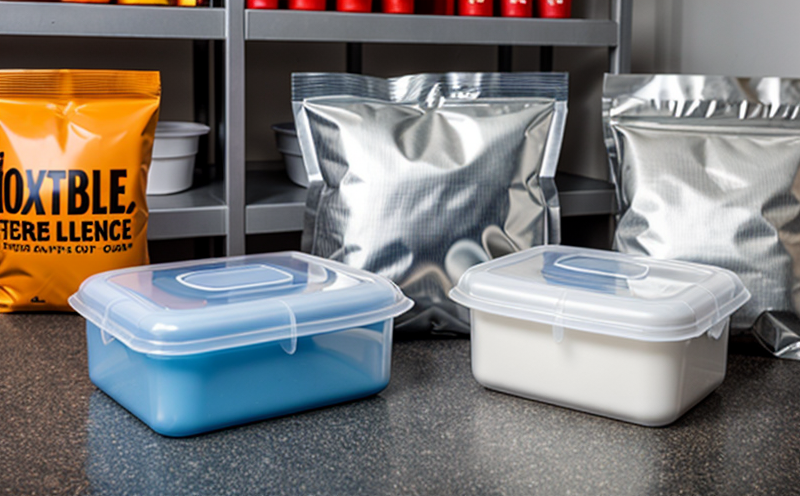ISO 15105-2 Oxygen Transmission Rate Evaluation
The ISO 15105-2 standard provides a robust framework for evaluating the oxygen transmission rate (OTR) of flexible packaging materials. This test is crucial in ensuring that packaging materials maintain optimal gas barrier properties, which are essential for preserving product freshness and quality.
OTR testing follows a standardized protocol to measure how much oxygen passes through one square meter of material per 24 hours at specific conditions. These conditions include temperature, humidity, and atmospheric pressure, all of which can significantly influence the results. The test helps in assessing the effectiveness of barrier materials used in packaging solutions.
The importance of this testing cannot be overstated, especially for products that require extended shelf life or are sensitive to oxidation. By adhering to ISO 15105-2, manufacturers can ensure compliance with international standards and regulations, thereby protecting brand reputation and consumer trust.
Our laboratory uses state-of-the-art equipment and methodologies to conduct these tests accurately and efficiently. We employ highly skilled technicians who are well-versed in the nuances of ISO 15105-2 testing, ensuring reliable data that can inform critical decisions about packaging design and material selection.
The process begins with careful specimen preparation, where we ensure that the materials used for testing closely resemble those found in real-world applications. This is followed by precise measurement techniques using specialized equipment designed to meet ISO standards. Our results are reported comprehensively, providing detailed insights into the OTR values of various packaging materials.
Understanding the implications of oxygen transmission rates is vital not only for preserving product integrity but also for minimizing environmental impact. By reducing unnecessary material usage and waste, manufacturers can contribute positively to sustainability goals without compromising on quality.
The ISO 15105-2 test is just one part of a broader suite of packaging evaluation services offered by our laboratory. We provide comprehensive testing solutions tailored to meet the unique needs of our clients across various industries including food, pharmaceuticals, and consumer goods.
Industry Applications
| Industry Sector | Packaging Type | Oxygen Transmission Rate Evaluation |
|---|---|---|
| Foods and Beverages | Aseptic Packaging, Fresh Produce Packaging | Ensures product freshness by maintaining low OTR levels. |
| Pharmaceuticals | Blister Packs, Bottles with Capsules | Avoids degradation of active ingredients due to oxygen exposure. |
| Consumer Goods | Plastic Bottles, Cartons | Prolongs shelf life and enhances product appeal. |
| Electronics | Enclosures for Sensitive Components | Prevents oxidation that can lead to component failure. |
| Medical Devices | Maintains sterility and extends product shelf life. |
Eurolab Advantages
At Eurolab, we pride ourselves on offering unparalleled expertise in packaging testing. Our team of professionals ensures that every test conducted adheres strictly to international standards like ISO 15105-2.
We offer a range of services beyond just OTR evaluation, including mechanical strength tests, seal integrity checks, and moisture vapor transmission rate (MVTR) assessments. This holistic approach allows us to provide comprehensive insights into the performance characteristics of packaging materials.
Our advanced facilities and cutting-edge technology enable us to deliver accurate results swiftly, helping our clients make informed decisions promptly. With Eurolab, you can trust in reliable data that supports your ongoing quality assurance efforts.
Why Choose This Test
The ISO 15105-2 Oxygen Transmission Rate Evaluation is a cornerstone of any comprehensive packaging testing program. Here’s why it stands out:
- Compliance with International Standards: Adhering to ISO standards ensures that your products meet global regulatory requirements.
- Enhanced Product Quality: By accurately measuring OTR, you can ensure that your packaging meets or exceeds expected performance levels.
- Sustainability Benefits: Lower OTR values contribute to reduced waste and more efficient use of resources.
- Customer Satisfaction: Consistent product quality leads to higher customer satisfaction and loyalty.





